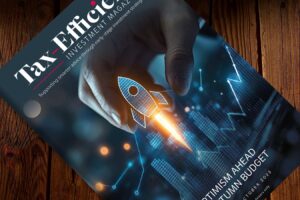As interest rates and inflation have risen, so too has the appetite to find reliable sources of income. One of the most popular is dividend paying stocks, particularly as investors seek inflation-proof places to put their money to work.
Amongst those who have taken either semi, or full, retirement, the need to generate an income to afford their lifestyle is key. And for workers who have no other earnings aside from employment or self-employment, dividends are often high on the list of ways to generate extra cash. So, how useful are they?
What is a dividend?
A dividend represents an allocation of a firm’s profits. The directors decide how much of a company’s earnings to retain for growth and how much to pay out to shareholders. As such, all shareholders get to do is ratify that decision at an annual general meeting (AGM).
There are two stage at which dividends are typically – interim (mid-way through the year) and final (usually paid out once the AGM has taken place).
It is also worth noting that there are two separate species of dividend – a preference and an ordinary. Preference dividends are usually a fixed amount and must be paid first. Ordinary dividends, on the other hand, are variable and usually paid out after bank interest, bond coupons and preference dividends.
Potential for a passive income stream
There are a number of reasons why an investor might want to consider dividend stocks, one being the potential for a passive income stream. Regular dividend payments from a firm puts money in an investor’s pocket that they can use as, and when, they please. Options include saving it or using it for everyday spending. This means there is less pressure to sell stocks to generate cash, allowing savers to stay in the market for longer to capture the benefits of compounding.
So, how useful are dividends when it comes to coping with higher inflation? The answer is “it depends”. Some of the companies that pay generous dividends will tend to enjoy higher pricing power and cashflow, enabling them to prosper during tougher times. Typically, they will prefer to use cash reserves to continue to pay the dividends they have promised to loyal investors, rather than cut them. However, there are some other factors to weigh up.
Don’t overlook reinvestment
Spending dividends when they are paid isn’t always wise. A good alternative is to reinvest them (in effect into buying more shares). Over the long term this can be powerful. Data from Barclays, for example, suggests they have accounted for around 40% of the return from the S&P 500 since the 1920’s.
Know how much is tax-free
One of the downsides of dividends is that the amount an investor can earn tax-free is dropping (from £2,000 in 2022/23 to £1,000 in 2023/24) and this therefore makes them less tax efficient outside of a wrapper such as an ISA or SIPP.
Avoid value traps
Another headache is the fact that dividend stocks tend to be concentrated in certain sectors which can become “overbought” as they draw in investors who may end up overconcentrated in terms of their exposure to them.
And while dividend stocks can offer two forms of return, through dividend payments and share price appreciation, at a certain point, high paying dividend shares can become a “value trap”. These arise when other investors spot the same opportunity, drive the price up and create a poor value “crowded trade”. In short, this means the dividend on offer is too expensive and doesn’t offer a good return on investment in the long run.
Consider other income sources too
It is therefore important to not over-rely solely on one income stream such as dividends. Instead, investors should try to diversify across different sources of income, such as bonds, property and even cash deposits for emergency funds and upcoming spending commitments. As such, they should consider taking advice on the best overall strategy for combatting inflation.






![[uns] house of commons, parliament](https://ifamagazine.com/wp-content/uploads/wordpress-popular-posts/788873-featured-300x200.webp)

![[UNS] tax](https://ifamagazine.com/wp-content/uploads/wordpress-popular-posts/788955-featured-300x200.webp)





